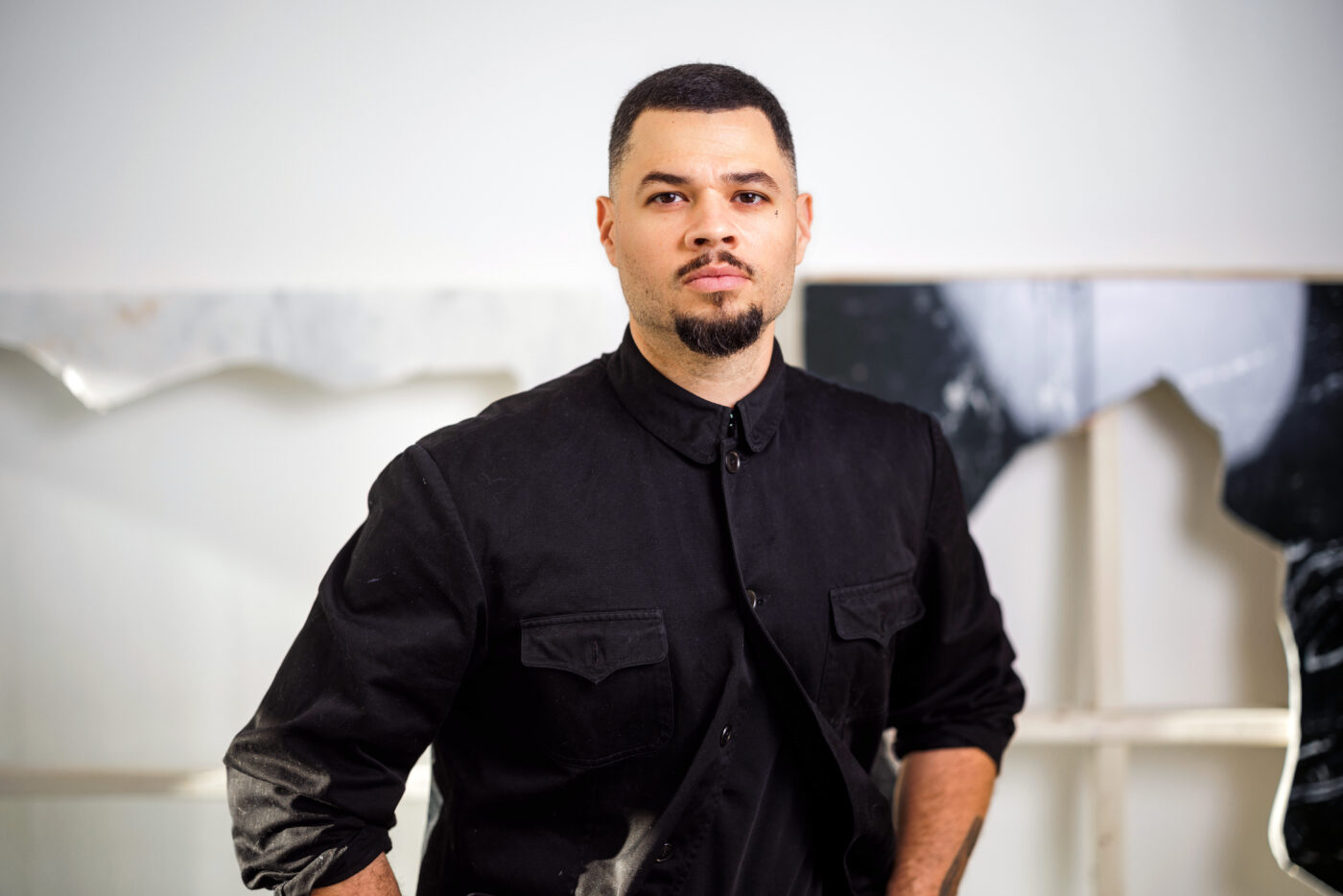

“There is nothing new under the sun, but there are new suns.” –Octavia Butler

3–4 minute experience, or the time it takes to harvest some berries.
Over the course of two years in North Minneapolis, a basketball court–shaped green space came to fruition through the vision of regenerative land sculptor Jordan Weber. Called Prototype for poetry vs rhetoric (deep roots), it is home to native vegetation that cleanses the soil and air and feeds neighborhood residents. For this issue, we invited Weber to share more about the impetus for the project, his favorite plant species at the site, and their roles in healing and nurturing the land and the community.
BY JORDAN WEBER
The Midwest is the most biologically altered landmass in the US. This systematic destruction of biodiversity has resulted in monocropped lands by “too big to fail” agricultural and industrial corporations throughout the Midwest region. North Minneapolis suffers from environmental apartheid through decades of city urban planners green-lighting the building of toxic industry next to historically black residential communities, resulting in a 330% higher rate of lung disease-related deaths than any other part of the city. This legacy of violence against biodiverse lands in the Midwest is equal to the physical and environmental violence against the body of color.
The work addresses self-empowerment and determination, soil and air cleansing, spiritual reflection and meditation, and food supply.
Prototype for poetry vs rhetoric (deep roots) was developed during a two-year artist residency at the Walker Art Center in North Minneapolis, created in collaboration with the Twin Cities organization Youth Farm and curated by Nisa Mackie. The work addresses self-empowerment and determination, soil and air cleansing, spiritual reflection and meditation, and food supply. We hope that Prototype for poetry vs rhetoric (deep roots) can be another tool in the ongoing environmental justice fight in North Minneapolis.
Designed for use by neighborhood residents, the farm grows around thirty-six varieties of native fruits and vegetables as well as pollution-mitigating trees, shrubs, and grasses. Vegetables, fruits, berries, and herbs will be available for free. A Black Obsidian community gathering space will create a site for reflection, meditation, and respite.
The layout is based on the form of a basketball court to visually invite young people into the garden. Donk chrome-like basketball hoop sculptures act as rainwater collectors for the gardens at the lower levels of the court.
[Video description: Drone video footage begins at ground height then slowly rises above the ground to provide a bird’s eye view of the garden.]
(Asclepias tuberosa)
Butterfly Milkweed is an essential North American pollinator species for butterflies and bees. Monarch caterpillars feed exclusively on the sap from its leaves. This habitat created by the milkweed is critical in maintaining these pollinators for the human food system in totality. Milkweed’s sap also contains cardiac glycosides that can be used for a variety of medicines to treat things like heart disease.
(Prunus cerasus ‘North Star’)
A recent study from South Korea’s Forest Research Institute indicated that Cherry trees can mitigate up to twenty pounds of carbon a year. We planted three on-site!

[ID: Left: A photograph taken on a warm, sunny day. Jordan Weber bends over and points somewhere beyond the camera. He wears a mask and work gloves and steps in dark, moist soil. The kids are both wearing short sleeves and shorts and pulling yellow-handled rakes taller than they are. Right: Photo of a number of people in a garden on a sunny day. A young girl wearing a light pink tank top and a radiant smile stands at center spraying Jordan with the hose as two men, laughing, try to get her to point the hose away from him. Jordan runs away from the spray of the hose with a joyful smile.]
(Andropogon gerardii)
Prairie grasses and wildflowers develop deep, extensive root systems that are important in maintaining and creating carbon sinks. Some prairie grasses such as Big Bluestem grow root systems up to fifteen feet deep. These deep-rooted prairie systems can store more carbon below ground than forests can above. We will be planting more Bluestem this spring at Deep Roots with the Youth Farm team.
(Sambucus canadensis)
The Elderberry plant is an amazing antioxidant used by Native American tribes since the Stone Age. This shrub was selected for its historical ties to the region’s tribes as a medicine and tool for craftwork and pipe-making.

[ID: A photographic close up of a hand with pink-painted nails gently caressing an orange wildflower. The hand and the flower are in sharp focus with greenery and other orange flowers blurred artfully in the background.]

[ID: A portrait of a man standing in a studio space. He stares directly at the viewer, his face neutral, one eyebrow slightly raised. He has short hair, a neat beard, and wears a black jacket, which is buttoned at the top.]
Jordan Weber
He // Him // His
Des Moines, IA and Cambridge, MA
Jordan Weber is a Des Moines, Iowa–based regenerative land sculptor and environmental activist who works at the cross-section of social justice and environmental racism. He is currently in residence at Harvard University as the inaugural LOEB/ArtLab Fellow and the Pulitzer Arts Foundation in St. Louis, Missouri. Weber’s two-year project residency centers on social and environmental justice, incarceration, and trauma-informed healing, with a specific focus on the Close the Workhouse campaign — a collaborative project that is dedicated to the closure of St. Louis’ Medium Security Institution (better known locally as the Workhouse). Previous awards and fellowships include the Joan Mitchell Foundation Painters & Sculptors Grant, Creative Capital Award, A Blade of Grass Fellowship, and the African American Leadership Forum award.
